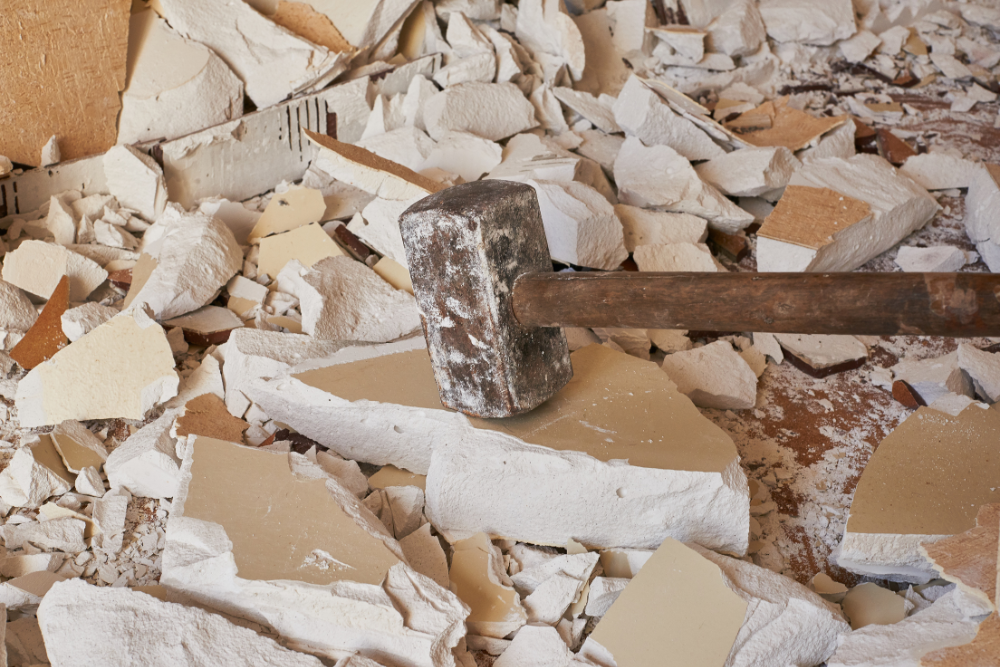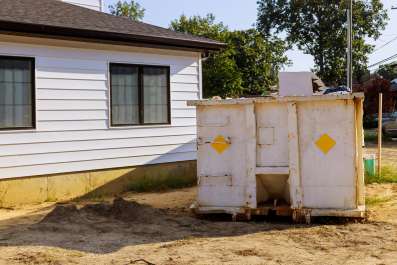
When to Call for Professional Flooring Removal Services
September 2, 2025
How Demolition Cleanup Improves Your Property’s Value
September 3, 2025Planning Your Shed Demolition
Preparing for a shed demolition begins with a clear plan that prioritizes safety and efficiency. Start by surveying the shed, noting its construction materials and overall condition. Wooden sheds may require different tools and precautions than metal or composite structures. Removing any items inside is essential to prevent accidents and make the process smoother. Ensure that you have protective gear, including gloves, safety glasses, and sturdy footwear, to guard against splinters, nails, or falling debris. Considering the location of nearby structures, trees, and utilities will also help prevent unintended damage. Proper planning at this stage reduces stress during demolition and sets the tone for a clean, controlled process.
A methodical approach involves breaking down the shed in manageable sections. Begin with detachable elements such as doors, windows, and roof panels, then move to walls and flooring. Using the right tools like hammers, pry bars, or reciprocating saws speeds up the process while maintaining control. Sorting materials into piles for recycling, disposal, or repurposing contributes to an organized workspace. Taking time to plan and prepare ensures that your shed demolition is safe, efficient, and less taxing physically and mentally.
Ensuring Safety During Demolition
Safety is paramount when dismantling a shed, as the risk of injury can increase with each step. Always inspect the shed for structural weaknesses, exposed nails, or unstable flooring before beginning. Wearing protective gear and keeping a first aid kit nearby adds extra security. Establishing a clear work zone and warning others to stay at a safe distance prevents accidents from flying debris or falling components. Using ladders or scaffolding properly ensures stability when handling elevated sections, and having a helper nearby improves both safety and efficiency.
Proper tool handling is critical for avoiding injuries. Choose the appropriate equipment for each task, whether it’s a hammer for removing nails or a saw for cutting panels. Maintain a slow, steady pace to reduce mistakes and potential hazards. Regular breaks help sustain focus and minimize fatigue-related accidents. Prioritizing safety not only protects you but also allows the demolition to progress smoothly, keeping both the site and surrounding area intact. A careful, deliberate approach ensures that the shed comes down efficiently without unnecessary risks.

Tools and Equipment Needed
Successful shed demolition relies on having the right tools and equipment at your disposal. Essential hand tools include hammers, pry bars, screwdrivers, and pliers, which help dismantle walls, remove nails, and pry panels apart. Power tools such as circular saws or reciprocating saws make cutting through wood or metal faster and less labor-intensive. Safety gear including gloves, goggles, and sturdy footwear is non-negotiable, while wheelbarrows or carts help transport debris efficiently. Preparing all necessary equipment before starting reduces interruptions and allows for a continuous workflow.
Organizing your tools strategically enhances both efficiency and safety. Keep frequently used items within reach, and designate areas for disposing of debris as you work. Consider having additional supports such as ladders or scaffolding for elevated sections, and ensure all equipment is in good working condition. Having backup tools available can prevent delays if something breaks or becomes ineffective. With proper preparation and organization, you’ll have a smoother demolition experience and minimize the chance of accidents or setbacks.
Removing Shed Contents
Before any demolition begins, it is vital to clear out all shed contents to prevent damage and ensure safety. This includes gardening tools, storage bins, and any hazardous materials such as chemicals or paint. Sorting items for disposal, recycling, or relocation not only creates a safer work environment but also helps reduce clutter in your home. Removing items carefully also allows for a more thorough inspection of the shed’s condition and stability, which informs your demolition strategy.
Once emptied, examine the shed for hidden hazards like loose boards, rusted nails, or structural weaknesses. Addressing these issues before the demolition helps prevent injuries and damage to surrounding property. A clear workspace allows for unhindered movement, making the demolition process faster and more controlled. Taking the time to properly remove shed contents sets the foundation for a smooth and safe dismantling process.
Demolition Techniques for Wooden Sheds
Wooden sheds require specific techniques to ensure safe and effective demolition. Start by removing roof panels, followed by walls, and then flooring to maintain structural stability as you work. Use a combination of hammers, pry bars, and saws to carefully detach components without causing sudden collapses. Paying attention to the direction in which panels fall can prevent damage to nearby structures and reduce cleanup time. Strategic dismantling also allows you to salvage wood for reuse in other projects or for firewood.
Breaking down the structure methodically is crucial to prevent injury. Avoid rushing through the process, especially when handling heavy beams or panels. Working from the top down provides control, and having a helper can stabilize sections as they are removed. Sorting materials into designated piles helps with recycling and disposal, keeping the site organized. Applying these techniques ensures that wooden shed demolition is efficient, safe, and environmentally conscious.
Demolition Techniques for Metal Sheds
Metal sheds present different challenges compared to wooden structures. Begin by detaching panels and roofing, often held together with screws or bolts rather than nails. Using appropriate power tools such as drills or reciprocating saws speeds up the process, while also minimizing physical strain. Handling metal carefully is important, as sharp edges can cause serious injury. Proper protective clothing, including thick gloves and long sleeves, helps mitigate these risks.
Disassembling metal sheds requires patience and attention to detail. Removing components in an organized order prevents collapse and reduces the likelihood of bending or damaging recyclable materials. Storing screws, bolts, and fasteners for potential reuse can also be beneficial. Following a strategic approach maintains safety and efficiency, ensuring that the demolition progresses smoothly. Metal shed dismantling, while challenging, can be controlled and effective with the right mindset and preparation.
Managing Debris and Disposal
Efficient debris management is essential to maintain a clean and safe demolition site. As each section of the shed is dismantled, separate materials into piles for disposal, recycling, or potential reuse. Wooden planks, metal panels, and other materials should be organized for easier handling. Using containers, wheelbarrows, or carts helps transport debris to the appropriate area, minimizing physical strain and keeping the workspace clear.
Proper disposal of demolition debris ensures environmental responsibility. Contact local recycling centers or waste facilities to understand disposal guidelines for various materials. Removing debris promptly prevents accidents, improves workflow, and reduces the chance of attracting pests. Implementing a debris management plan streamlines cleanup, allowing the demolition to conclude efficiently and leaving the site ready for its next purpose.
Environmental Considerations
When demolishing a shed, it is important to consider environmental impact. Salvaging materials for reuse, recycling, or donation reduces waste and supports sustainability. Avoid burning debris, as this can release harmful chemicals into the air. Proper disposal of hazardous substances such as paint, chemicals, or treated wood protects soil and water quality. Thoughtful planning minimizes the ecological footprint of your demolition project.
Taking time to recycle and repurpose materials not only benefits the environment but can also reduce disposal costs. Many local facilities accept metal, wood, and plastic for recycling. Planning ahead to sort materials and coordinate with recycling centers ensures that your shed demolition is both responsible and efficient. Environmental mindfulness allows you to complete your project without unnecessary harm to the surrounding area.
Common Challenges and How to Overcome Them
Shed demolition can present unexpected challenges such as stubborn materials, uneven terrain, or hidden hazards. Heavy or rotted wood may require additional tools or manual effort, while uneven ground can complicate stability during dismantling. Addressing these challenges proactively with the right equipment and safety precautions reduces risk and frustration. Flexibility and patience are key in navigating obstacles effectively.
Anticipating difficulties also allows for creative problem-solving. For example, using leverage to remove stubborn panels or enlisting help for lifting heavy sections can make the process manageable. Staying calm and methodical prevents accidents and maintains project momentum. By preparing for common challenges, shed demolition becomes a controlled, efficient, and ultimately rewarding task.
Preparing the Site for Future Use
Once the shed is demolished, preparing the site for its next purpose is essential. Clear remaining debris, level the ground, and assess soil conditions for future landscaping, construction, or storage projects. This step ensures the area is safe, functional, and ready for its intended use. Taking time to properly prepare the site prevents issues down the line and enhances the aesthetic and practical value of the space.
Consider planting grass, installing pavers, or creating garden beds depending on your future plans. Maintaining proper drainage and soil stability will ensure longevity for any new structure or landscape feature. A well-prepared site after demolition maximizes the usability of your property and allows you to move forward confidently with your next project, turning a once-cluttered space into a functional and inviting area.
Conclusion
Completing a shed demolition involves careful planning, safety awareness, and thoughtful execution. Each stage from planning to debris disposal contributes to a successful project, transforming a cluttered space into an organized and usable area. Taking the time to understand proper techniques, anticipate challenges, and consider environmental impact ensures the process is smooth and efficient. Strategic preparation and attention to detail make the demolition safer and more manageable while protecting surrounding property.
For professional assistance with shed demolition or other Junk Removal needs, North Bay Junk Removal in Santa Rosa, CA provides reliable and comprehensive services. Their team is equipped to handle any size project with care, ensuring safe and efficient removal. You can contact them at 707-478-6817 to schedule service or request a quote, making the process of clearing unwanted structures stress-free and straightforward. Their expertise in junk removal guarantees that your property is left clean and ready for its next chapter.




